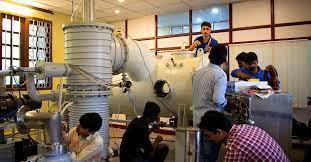Bengaluru: Space technology startup Bellatrix Aerospace has successfully tested India’s first privately developed hall-effect thruster, an electric propulsion engine for micro satellites weighing 50-500 kg.
The thruster will be ready for commercial use by the end of this year, the company said.
Bellatrix said it has completed ground tests for the new thruster in line with Indian Space Research Organisation (ISRO) and European Space Agency (ESA) standards at its lab at the Indian Institute of Science, Bangalore.
It is now readying to test its hall-effect thruster in space, for which it has signed an agreement with a European company for the device to be fitted to a satellite which will be launched in the coming months.
“We have optimised this propulsion system to specifically cater to the microsatellite segment. There were a lot of challenges in scaling down the technology, both in the plasma physics and the thruster construction,” said Rohan M Ganapathy, co-founder and chief executive officer at Bellatrix Aerospace. “It has taken us more than four years to develop this from scratch.”
Hall-effect thrusters were first developed by the erstwhile Soviet Union in the 1970s. While they’ve become a mainstay for satellite propulsion over the years, the technology has traditionally been used only for large satellites weighing in excess of 2,000 kg.
Bellatrix said its new thruster will provide a reliable propulsion solution to small satellite manufacturers, a market which is seen as booming after players like Starlink, OneWeb and even Amazon have gotten into a race to create a web of satellites that can beam broadband internet down to earth.
Simultaneously, there is also a growing opportunity for earth observation satellites, which several companies including giants like Airbus are vying for.
The Bengaluru-based company said its hall-effect thruster would offer far higher specific impulse (mileage) and could double the service life of such satellites to 10 years. This could result in 3X higher return on investment for satellite markets according to its estimates.
Bellatrix said its ability to scale down the technology gives it a competitive edge. Its current designs use xenon as fuel, but it says it is working on other proprietary propellants that will make its thruster more compact in the future.
“The smaller the thruster, the more complex it gets. The way to achieve this is less known. We have succeeded in developing the smallest Hall Thruster in the country,” said Rajesh Natarajan, a senior scientist in Bellatrix’s electric propulsion system division who played a key role in this development.
Apart from selling the propulsion unit to satellite makers, Bellatrix said the hall-effect thruster will also play a key role in making its space taxi, which will be able to ferry small satellites into multiple orbits, a reality.
“Our space taxi will allow multiple satellites to be launched in different orbits on a single rocket and this engine is one of the critical technologies in achieving that,” Ganapathy said.
Bellatrix had earlier won an order from ISRO for developing the world’s first commercial microwave plasma thruster which uses water as its fuel.





































